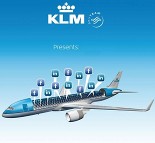
There is little difference between supermarkets in terms of the products they stock. The larger ones may carry more variety, but typically you can buy everything you need from any supermarket.
Yet despite this people are still loyal to their chosen brand.
While place, product, price and promotion all play their part, I'm wondering if ultimately there is another "p" here - people. Not the staff or employees that you'd normally associate with "people" but actually the other customers.
From a demographics point of view, each supermarket attracts a certain type of customer. Whether you think about Aldi, Adsa, Tesco or Waitrose, you can probably quickly draw up a basic persona to represent their "average" customer. While in reality customers will be a mix of age, affluence and attitude, you can feel the difference in customer type if you move between stores.
Obviously brands know this and foster it by catering to these customer types in how they present, price and promote their products. Other brands like Tesco and Sainsburys try to be more inclusive in the customer groups they attract, providing a mixture of products from "Basics" to "Finest" in an attempt to serve the different demographics as well as providing a way for customers to transition up (or down) as circumstances dictate.
Peter Jackson, professor of human geography at Sheffield University highlighted this fact a few years ago in an article in the Guardian when he said:-
"The problem for the supermarkets, is to provide a store environment that is attractive to a wide range of people to maximise their market share, while shoppers seem to want a more differentiated environment where they will be surrounded by people 'like themselves', with whom they feel comfortable."
Some brands however take this customer desire to be "surround by people like themselves" as a positive and go further to actually leverage their customer base as part of the service benefit.
KLM for example has been experimenting in this area for a while. Their most recent offering, "Meet & Seat" allows customers to share their social profiles like Facebook and Twitter to enable them to pick seats next to other customers with complimentary interests. They also provided a similar service a few years ago allowing customers who flew into regions like China to meet up before, during and after flights either online or in person.
Starwood Hotels takes a slightly more hands off approach by promoting the use of Foursquare for customers to check in which allows for people to connect, should they wish to. It also organises events for its loyal customers, providing opportunities for them to socialise.
It's not just service based business like airlines or hotels though that can connect customers. Every business essentially exists because of it's customers and so it makes sense to facilitate connections between them.
Car brand Jeep has been doing this for years with it's Jeep Jamboress, started in 1953 and described as "probably the first owner loyalty programs" by Lou Bitonti, Senior Manager of Jeep Brand Global Marketing. Now using Camp Jeep since 1995, it provides a way for Jeep owners to meet and share their passion for both off-roading and the Jeep brand.
Even though brands like Jeep and Harley Davidson have been building active communities around their brands for years, there is a real opportunity here for brands within many different verticals to facilitate connections between like minded customers. Social media makes this much easier to do, but I think the real trick is to connect social media into the heart of the customer interaction.
For too many brands, social media is just another form of marketing. Treated separately. Operated separated. Measured separately.
The KLM "Meet & Seat" programme is unique and innovative simply because it brings social media right into the purchase transaction and connects the service and product directly with the social network.
That's clever.